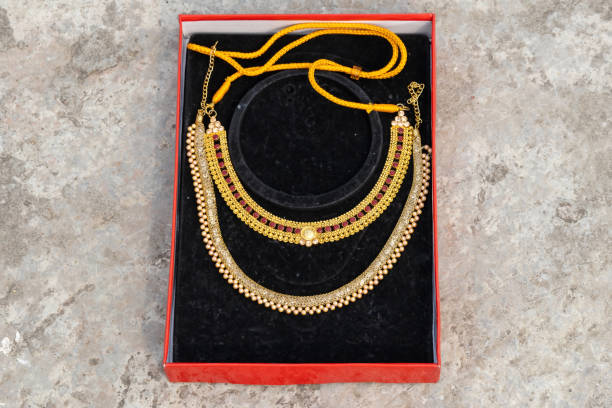The resurgence of choker necklaces has transformed them from a ’90s nostalgia piece into a sophisticated accessory that commands attention across fashion circles. Contemporary jewelry design has elevated the choker necklace beyond its historical associations, creating versatile pieces that seamlessly transition from boardroom presentations to evening galas. Understanding the technical aspects of choker construction, material selection, and styling principles enables wearers to maximize their investment while creating compelling looks that reflect both personal style and occasion appropriateness. Modern chokers incorporate advanced metallurgy, precision engineering, and ergonomic design considerations that weren’t available in previous decades, making them more comfortable and durable than their predecessors.
Understanding Choker Construction and Fit
Proper choker fitting requires precise measurements that account for neck circumference, throat positioning, and personal comfort preferences. The ideal choker sits approximately one inch above the collarbone, creating visual balance without restricting movement or breathing. Professional jewelers recommend measuring the neck at its narrowest point, typically just below the Adam’s apple, then adding 1-2 inches depending on the desired fit intensity.
Construction materials significantly impact both appearance and wearability. High-quality chokers utilize flexible materials like memory wire, silk cord, or articulated metal links that conform to neck movement while maintaining their shape. The clasp mechanism deserves particular attention – magnetic clasps offer convenience but may not provide adequate security for heavier pieces, while traditional lobster clasps ensure durability but require assistance for application.
Material Selection for Different Occasions
Professional environments benefit from understated chokers in precious metals like 14k gold or sterling silver. These materials project sophistication while avoiding the fashion-forward boldness that might distract from professional credibility. Matte finishes work particularly well in fluorescent office lighting, as they eliminate unwanted reflections that can appear unprofessional during presentations or video conferences.
Evening occasions permit more experimental approaches. Chokers incorporating gemstones, crystals, or textural elements create focal points that complement formal attire. The key lies in balancing the choker’s visual weight with other jewelry pieces – a statement choker should dominate the neckline, requiring simpler earrings and minimal additional necklaces.
Layering Techniques and Visual Proportion
Advanced styling involves strategic layering that creates depth without appearing cluttered. The fundamental principle involves varying lengths and weights – a tight-fitting choker pairs effectively with longer necklaces that fall at different points on the chest. This creates visual interest while maintaining balanced proportions.
Neckline compatibility requires careful consideration. Off-shoulder and strapless designs showcase chokers optimally, as they provide unobstructed visual space. High necklines compete with chokers for attention, though delicate chain versions can work with mock turtlenecks if the colors complement each other.
Color Coordination and Metal Mixing
Contemporary styling embraces mixed metals, though the execution requires understanding of color temperature and visual harmony. Warm metals like gold and copper pair naturally, while cool metals like silver and platinum create cohesive looks. Mixing warm and cool requires a bridging element – rose gold serves this purpose effectively, containing both warm and cool undertones.
Gemstone selection should consider skin undertones. Warm undertones benefit from amber, citrine, and warm-toned pearls, while cool undertones are enhanced by sapphires, emeralds, and cool-toned pearls. This scientific approach to color selection ensures the choker enhances rather than competes with natural coloring.
Maintenance and Storage Considerations
Proper care extends choker lifespan significantly. Precious metals require different maintenance protocols – gold resists tarnishing but can scratch easily, while silver tarnishes but maintains durability. Storage in individual pouches prevents tangling and scratching, particularly important for delicate chain designs.
Regular cleaning maintains appearance and hygiene. Ultrasonic cleaners work well for solid metal pieces, though they can damage delicate elements like pearls or certain gemstones. Professional cleaning annually ensures optimal appearance and identifies potential structural issues before they become problematic.



